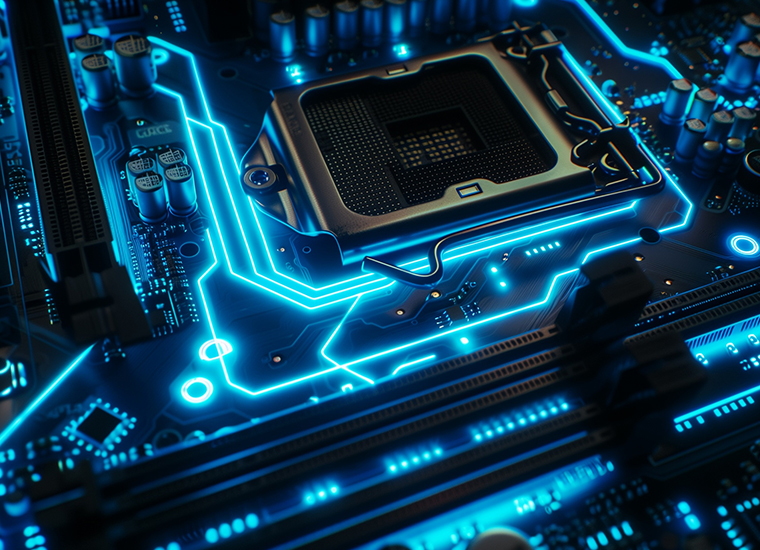AGP China Technology Report - Thermal Management Equipment
Table of Contents
Page Section
03 Technology Overview
07 Historical Development Timeline
10 Product Differentiation
15 China Technology Ecosystem
18 Sino-Foreign Collaboration
20 Common Applications In China
24 Government Policy Support
27 Impact On Market Incumbents
30 Final Conclusion
31 Appendices
1.1 Global Snapshot
Definition and Importance of Thermal Management Equipment
Thermal management equipment encompasses a range of technologies and systems designed to regulate and dissipate heat generated by electronic components within data centers. Effective thermal management is crucial for maintaining optimal operating temperatures, ensuring system reliability, and enhancing energy efficiency. As data centers evolve to support high-performance computing (HPC), artificial intelligence (AI), and machine learning workloads, the demand for advanced cooling solutions has intensified.
Key Technologies in Thermal Management
- Air-Based Cooling Systems: Traditional methods such as Computer Room Air Conditioning (CRAC) units and Computer Room Air Handlers (CRAH) circulate cooled air to dissipate heat. While widely used, their efficiency diminishes with increasing server densities.
- Liquid-Based Cooling Systems: These include direct-to-chip cooling and immersion cooling. Direct-to- chip cooling involves circulating coolant directly over heat-generating components, while immersion cooling submerges entire servers in dielectric fluids, offering superior heat dissipation and energy efficiency.
- Hybrid Cooling Solutions: Combining air and liquid cooling methods, hybrid systems aim to optimize performance and energy consumption, adapting to varying operational demands.
Global Market Trends and Benchmarks
The global data center cooling market is experiencing significant growth, driven by the escalating need for efficient thermal management solutions. In 2024, the market was valued at approximately USD 6.6 billion and is projected to reach USD 14.8 billion by 2033, reflecting a Compound Annual Growth Rate (CAGR) of 9.4% This growth is propelled by the increasing adoption of AI and high-density computing hardware, necessitating advanced cooling technologies.
Immersion cooling, in particular, is gaining traction. The market for data center immersion cooling is estimated at USD 1.00 billion in 2025 and is expected to reach USD 3.18 billion by 2030, at a CAGR of 26.15% during the forecast period. This surge is attributed to the technology's ability to handle high thermal loads efficiently, making it ideal for HPC and AI applications.
Key performance indicators (KPIs) for thermal management systems include Power Usage Effectiveness (PUE), cooling capacity, and energy consumption. Innovations such as AI-driven cooling systems are enhancing these KPIs by dynamically adjusting cooling operations based on real-time data, leading to significant energy savings.
1.2 China Snapshot
Market Share and Domestic Capabilities
China's data center cooling market is expanding rapidly, driven by the country's digital transformation initiatives and the proliferation of data centers. The market is projected to grow from USD 497.62 million in 2024 to USD 3,349.75 million by 2032, with a CAGR of 26.92%. This growth is fueled by the increasing demand for energy efficient cooling solutions to support the nation's burgeoning digital economy.
Domestic capabilities in core components are strengthening, with Chinese manufacturers investing in the development of advanced cooling technologies. Companies are focusing on producing high-quality, cost-effective solutions to meet both domestic and international demand.
Leading Firms and Product Innovations
Prominent Chinese firms such as Huawei, Alibaba, and Tencent are at the forefront of implementing advanced thermal management solutions. These companies are investing in liquid cooling technologies to enhance the efficiency and sustainability of their data centers. For instance, Alibaba has integrated immersion cooling systems to support its high-density computing needs, achieving significant energy savings and performance improvements.
Product pricing varies based on the technology and scale of deployment. While initial investments in advanced cooling systems like immersion cooling are higher, the long-term operational savings and environmental benefits justify the expenditure.
National Policies and Industrial Targets
The Chinese government is actively promoting energy efficiency and environmental sustainability in data center operations. Policies such as the "Eastern Data, Western Computing" initiative aim to optimize data center distribution and encourage the adoption of green technologies. These policies are accelerating the adoption of advanced thermal management solutions, aligning with national sustainability goals.
Cost-Performance Edge and Application Scaling
China's focus on cost-effective manufacturing and technological innovation provides a competitive edge in the thermal management equipment market. The scalability of applications, from hyperscale data centers to edge computing facilities, further drives the demand for efficient cooling solutions.
Role in Advancing New Productive Forces
Advanced thermal management equipment plays a crucial role in supporting China's "new productive forces" by enabling the efficient operation of data centers that underpin digital services, smart manufacturing, and AI development.
Link to Demographic Shifts and Industrial Upgrading
As China's population ages and the workforce evolves, there is an increased reliance on automation and digital services. Efficient data centers, facilitated by advanced cooling technologies, are essential for supporting these services, contributing to industrial upgrading and economic growth.
Policy Relevance and Tech-Industry Integration
The integration of advanced thermal management solutions aligns with China's policy objectives of energy efficiency and technological self-reliance. Collaboration between the tech industry and policymakers is vital to drive innovation and achieve national goals.
1.3 Market Size
Global and China-Specific Market Estimates
The global data center cooling market is projected to grow from USD 6.6 billion in 2024 to USD 14.8 billion by
2033, at a CAGR of 9.4%. In China, the market is expected to expand from USD 497.62 million in 2024 to USD 3,349.75 million by 2032, with a CAGR of 26.92%.
Growth Scenarios
- High Growth: Rapid adoption of AI and HPC applications drives demand for advanced cooling solutions, leading to accelerated market expansion.
- Medium Growth: Steady technological advancements and policy support result in consistent market growth.
- Low Growth: Economic challenges and slow adoption rates hinder market development.
5-Year CAGR Estimates
The global market's projected CAGR of 9.4% reflects steady growth, while China's anticipated CAGR of 26.92% indicates a more rapid expansion, driven by aggressive digitalization and policy initiatives.
Market Breakdown
- Application Domain: HPC, AI, cloud computing, and edge computing.
- Customer Segment: Hyperscale data centers, colocation providers, and enterprise data centers.
- Geography: North America, Europe, Asia-Pacific, with China exhibiting significant growth.
In conclusion, the thermal management equipment market for data centers is poised for substantial growth, driven by technological advancements, increasing computing demands, and supportive policies. China's proactive approach positions it as a key player in this evolving landscape.
AGP Insights
Download PDF.
Your PDF report was sent successfully to your inbox!
Related Insights.











